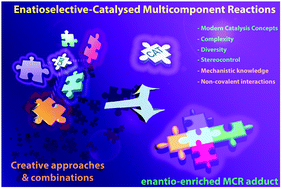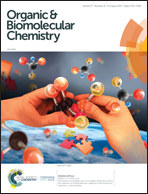Mechanistic knowledge and noncovalent interactions as the key features for enantioselective catalysed multicomponent reactions: a critical review
Abstract
This critical review focuses on some key features which determine successful enantioselective catalysed multicomponent reactions (MCRs) and are typically underappreciated in the literature. A critical analysis of this topic is of current interest and the importance of elucidating the reaction mechanism of a MCR, which is usually a neglected task, is a feature of analysis that is aimed at successfully achieving the enantioselective version of the reaction by proper comprehension of the transformation. The key role of noncovalent interactions is another feature analysed along with the transition state (TS) of the key step for the chiral induction of some selected MCRs. In this critical review, the problems of a lack of mechanistic knowledge and the importance of the rational design of new catalytic systems, considering the possible noncovalent interactions aimed towards designing “flexible” and adaptative catalysts to fit the key intermediates and reagents, are discussed in light of new concepts and trends.

- This article is part of the themed collections: Celebrating Latin American Talent in Chemistry and Mechanistic, computational & physical organic chemistry in OBC


 Please wait while we load your content...
Please wait while we load your content...